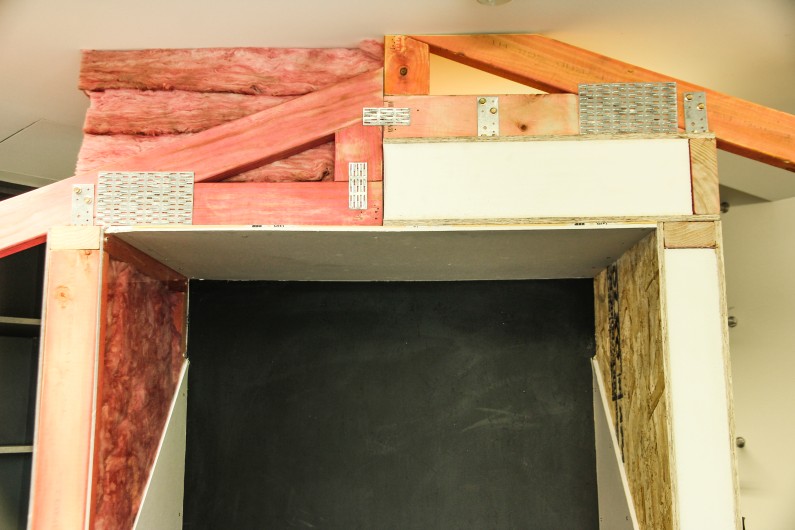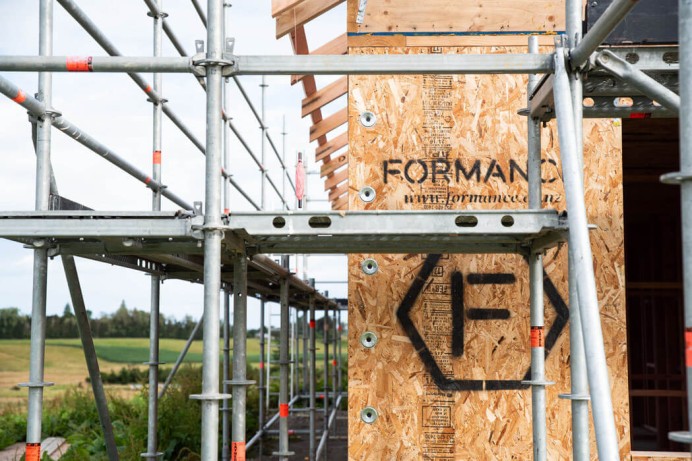House R-values vs energy efficiency, have you been fooled?

Do higher r-values equal more energy-efficient homes? The common myth is that high R-Values in a house walls, roof and floor will increase energy efficiency, make the house more comfortable and lower the power bill for heating and cooling year round. Why is this not entirely true? Is it possible that there’s more to energy-efficiency than meets the eye?
You might be shocked to hear that more insulation r-value does not equal more energy efficiency. Really?
Most insulation providers will promote higher r-values as the ultimate specification to ensure an energy-efficient, healthy home with a low power bill…but take care. If you believe that you can be taken for a ride.
Here’s why.
Trying to design and build an energy-efficient home can be confusing.
How do you compare and make sure you’re not wasting money on things that won’t make much, if any, difference?
What’s the truth about the real energy-efficiency of a house?
Discussing energy-efficiency is a little more detailed than the simple explanations that are often offered. But the real issue of whether high r-values equal high energy-efficiency is a resounding NO.
Do higher r-values equal greater energy-efficiency?
It’s probably best to address this question first. Most people believe the answer is yes.
The simple fact of the matter is that r-values are only a measure of how resistant a material is to heat transfer through the material itself. The higher the r-value the more resistant the material to transferring heat, or in other words the higher the insulation properties of the material.
The point here is that it’s a material property, not a measure of how much energy your home will use to stay warm. It tells you nothing about how many kWh (electrical power that you pay for, check your power bill, it’s there) are required to keep your home warm year-round.
If you want to pay for material properties without knowing if they make a difference to your energy-usage choose higher r-value products.
For the purpose of the explanation we’ll focus on a home that we want to keep warm in a colder climate, but the same principles apply for a home that we want to keep cool in a warmer climate.
Rate homes by energy-efficiency as a building, not the r-values of the materials.
If you want to understand how to design and build an energy-efficient home seriously then it’s important to understand the 3 concepts that contribute to it. R-value is just one of them. The true measure of an energy-efficient home is kWh/m2-year, kilowatt hours (the energy you pay for), per m2 (the area of your house), per year.
The lower the kWh/m2-year the more energy-efficient your home will be. The difference can be huge, between an energy-inefficient home (120 or more) to a highly energy-efficient home (15 or less). To find out what makes the difference in driving the kWh/m2/year down consider the following three concepts.
The 3 concepts are…
- Design
- Airtightness & Ventilation
- R-value
Let’s look at each concept independently, but while we do keep in mind that they work together. You cannot have energy-efficiency without design, airtightness & ventilation and r-value all working together.
To help develop a good understanding of how the three concepts work together we can consider the following statement:
Design is what ensures the natural location and architecture of the building is maximised for solar heat gain where desired, and to keep the heat out when not desired. Airtightness & ventilation affect how much heat is lost through air leakage in the building envelope, while maintaining sufficient volumes of healthy fresh air. R-values are what reduces heat loss through the materials used in the building envelope.
1. House Design
House design for energy efficiency is a very important factor, mainly focussing on the level of sun that is allowed into the home for each season. A well designed home for energy efficiency will allow sun into the home when you want it’s heat in the winter, and keep the sun out of the home when you are trying to stay cool in the summer. By using the natural high angle of the sun in summer and low angle in winter an architect can design the shading to ensure the most energy efficient home possible in any given geographical location. Failing to design properly will result in overheating during the summer, and underheating in the winter.
2. Airtightness & Ventilation
You cannot make a home too airtight, but you can have insufficient ventilation. If you don’t make your home airtight you are just letting heat escape, and external air to come into the home. So why don’t you want to let the external air into your home? Because the chances are it won’t be in the right condition for being inside your home. It might be too hot or too cold, or too damp, or worse it could be carrying undesirable odours or pollutants from outside into your home. Being too hot will mean you have to cool your home down, being too cold will mean that you need to heat your home up. Both treatments require more energy. It’s much smarter and more energy-efficient to make your building envelope airtight, and introduce controlled mechanical ventilation and it costs less energy to run. A nice airtight envelope with heat-recovery ventilation providing filtered air at the right temperature is the healthiest and most energy-efficient environment you can hope for in a modern home.
3. R-value
R-value is often referred to as insulation. It’s how well a particular material can insulate between two different temperatures; the outside and the inside. Higher r-value materials are better at stopping cold outside air temperatures from transferring through the material onto the inside surfaces. Single-glazed windows for example feel cold to touch from the inside when it’s very cold outside, compared to structural insulated panels which will feel the same temperature inside as the inside temperature of the room. The common misconception is that r-value alone creates an energy-efficient building, but without good design and consideration for airtightness & ventilation the higher r-values could actually cost you more in running costs. It’s also important to have r-values that are consistently high across the whole surface and don’t contain areas that have a much lower r-values. One example of this is timber framing, where the gaps between the frames can be insulated, but the frames themselves are not. The gaps might be R2.0 with fibreglass insulation, but the frames might be only R0.8, and the whole wall is full of timber thus reducing the effective insulation.
Where high r-values are a problem.
Without proper consideration for good design and air tightness & ventilation high r-values can actually cost you in the long run.
Overheating
If for example your home design allows a lot of sun in during the summer, and your high r-value roof traps the heat in you will have to turn on the air-conditioning to lower the temperature to a comfortable level. As we face rising global temperatures it will become even more important to consider all three factors together.
Wasted Investment
The other area where higher r-values are a problem is in your build budget. If your building is not airtight, yet you put high r-value insulation in your roof or floor then you will be wasting the insulation by losing heat through air-leakage. There comes a point where you’re throwing good money into something that’s not making your home any more energy-efficient. Consider, in the extreme, a cube of high r-value materials with a large hole in one side. It doesn’t matter how well the materials are preventing heat loss through themselves, it’s all going out the hole! You could have the sides of the cube a meter thick but it wouldn’t make any difference at all.
Consider all three factors together for an energy-efficient home
If you’re serious about energy-efficiency then consider all three factors together, and definitely don’t just go for higher r-values. You could be creating a problem for yourself which will last as long as you live in the home.
In contrast, a properly designed airtight home with heat-recovery mechanical ventilation and appropriately rated r-value building materials will provide you with the healthiest living conditions, and the lowest power bill for the lowest cost to build. You will live in your new home, smug in the knowledge you took the time to understand what is important and what is not, and know that you invested wisely in the areas of your home that make the biggest difference.
You can have your house design thermally modelled to make good decisions during the design phase of your home, before spending any money on materials. It’s a wise investment.
Talk to us today about energy modelling and how we can help you design the most energy-efficient, healthy home for your budget.
About Formance Structural Insulated Panels (SIPs)

Formance SIPs are a material that ticks the boxes of higher r-values and airtight construction, and are used by some of the leading energy-efficiency architects all over New Zealand. Many Passive House (the ultimate in energy efficiency) use Formance SIPs for super low energy bills and super healthy homes.
Find out more by visiting www.formance.co.nz







Post your comment
Comments
No one has commented on this page yet.
RSS feed for comments on this page | RSS feed for all comments